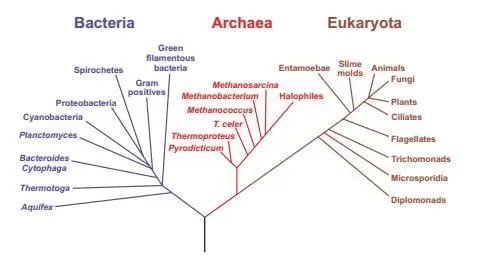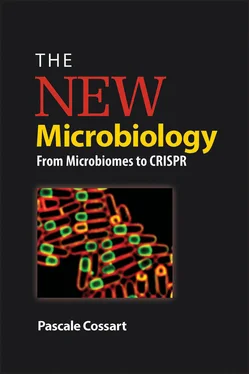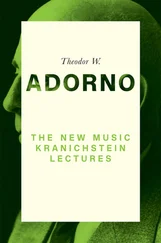Bacteria defend themselves not only from viruses but also from their fellow bacteria, which are sometimes very aggressive. To do this, they produce many kinds of toxins and antibacterial poisons for which they themselves have one or more immunity proteins. In the bacterial world, the struggle for life is continually taking place on an infinitesimal scale. But could these antibacterial poisons also be used on a much larger scale, to fight and gain better control over pathogenic bacteria? They certainly constitute a foreseeable strategy for replacing antibiotics that have become ineffective.
In fact, antibiotics have been, for decades, the most used antibacterial agents. Unfortunately, bacteria have adapted accordingly, developing resistances that have dramatic medical consequences, as in the case of the bacterium responsible for tuberculosis (Mycobacterium tuberculosis , or the Koch bacillus). We are no longer able to treat certain serious illnesses, and, as a result, they are coming back with a vengeance. The alarm has been sounded. The public is aware that this is a worldwide concern. Nevertheless, there are now reasons for optimism, or at least hope. Based on our recent knowledge, we are discovering new, alternative ways of fighting pathogens, raising new hopes for more effective treatments. For example, we can use our knowledge of bacterial genomes to identify inhibitors of chemical reactions or metabolic pathways that exist only in bacteria, not in humans.
Nevertheless, the threat of returning to a “preantibiotic” era is real and must be taken into account. We must therefore maintain constant vigilance when putting in place new therapies or when halting formerly obligatory vaccinations. Would it be reasonable, for example, to continue the policy in France of restricting vaccination with BCG (bacille Calmette-Guérin) against tuberculosis? Such questions should be carefully considered, especially in our global society where travel to and from countries with lower vaccination rates can be easy.
The objective in this book is to illustrate that very important discoveries and new concepts have come to light in the last few decades. These developments clearly show that the field of microbiology has undergone a bona fide revolution and that the amazing renaissance that is taking place can have wide-ranging consequences. This new understanding is going to change our daily lives dramatically, from our eating habits and daily routines to our way of looking at the rest of the living organisms on Earth: bacteria, plants, animals, even insects. In addition, recent discoveries will help us implement new strategies for fighting pathogenic agents and battle not only infectious diseases, but also their vectors. An example already in place in Australia is a plan to eliminate certain disease-bearing mosquitoes by releasing into the wild male mosquitoes that have been rendered sterile by infection with Wolbachia bacteria.
This book is limited to the rebirth of bacteriology, in part because this is my own domain of expertise. That said, virology, parasitology, and mycology are also mentioned because these areas benefit from the same technological advances. Bacteriology, however, is the field that has been the most profoundly impacted by these advances and that consequently has benefited from the development of the greatest number of new concepts.
It was predicted that the 21st century would be the age of biology. This is indeed the case, and microbiology is at the forefront. In 2012, the French Academy of Sciences, with its sister institutions in England and Germany, the Royal Society and the Leopoldina, held a colloquium titled “The New Microbiology” that met with great success. I have used the same title for this book.
I would like to sincerely thank my fellow collaborators Olivier Dussurget and Nathalie Rolhion for their meticulous critical reading of this manuscript, as well as Carla Saleh and Didier Mazel. Thanks to Juan J. Quereda for finalizing the drawings and the figures; Urs Jenal and Javier Lopez Garrido for the images of Caulobacter and Bacillus subtilis (cover photo); Caroline Dean, Jean-Pierre Caillaudeau, and Bruno Lemaitre for their suggestions; and Nicolas Witkowski for all his patience and advice.
I am grateful to Chloe A. M. Hagen for the primary transiation of the French text, and to Megan Angelini and Ellie Tupper for their skilled and careful editing to bring the spirit of the French edition to English speakers. I sincerely thank Christine Charlip for her careful and meticulous coordination of the English edition as well as Greg Payne for his enthusiasm for publishing the book.
Finally, thanks to Odile Jacob for her enthusiasm and the pleasure of our discussions on this new microbiology!

After studying chemistry in Lille, France, Pascale Cossart obtained a masters degree from Georgetown University, Washington, DC. Returning to France, she obtained her Ph.D. in Paris at the Institut Pasteur, where she now heads the Bacteria-Cell Interactions unit, which is also an Inserm and an INRA unit. After studying DNA-protein interactions, in 1986 Dr. Cos-sart began to study the molecular and cellular basis of infections by intracellular bacteria, taking as a model the bacterium Listeria monocytogenes . Her research has led to new concepts in infection biology as well as in microbiology, cell biology, and epigenetics.
Pascale Cossart is considered a pioneer in cellular microbiology. Her contributions have been recognized by a number of international awards, including the L’Oreal/UNESCO Prize for Women in Science (1998), the Richard Lounsbery Prize (Académie des Sciences, Paris/National Academy of Sciences, 1998), the Robert Koch Prize (2007), the Louis Jeantet Prize for Medicine (2008), and the Balzan Prize (2013). She is a member of the French Academy of Science (2002); a foreign member of the National Academy of Sciences (United States; 2009), the German Leopoldina (2001), the Royal Society (United Kingdom; 2010), and the National Academy of Medicine (United States; 2014); and, since January 2016, Secrétaire Perpétuel de l’Académie des Sciences, Institut Pasteur. (Photo courtesy of Agnès Ullmann.)
PART I New Concepts in Microbiology
CHAPTER 1
Bacteria: Many Friends, Few Enemies
Bacteria are unicellular living organisms that make up one of the three domains of life: Bacteria, Archaea , and Eukaryota ( Fig. 1). This model of three branches stemming from a common ancestor was first proposed by Carl Wo-ese in 1977. The absence of a nucleus is one major difference between prokaryotes and eukaryotes. Eukaryota or eukaryotes include animals, plants, fungi, and protozoa, which all have nuclei; bacteria and archaea are prokaryotes and do not have a nucleus. The DNA of prokaryotes is non-membrane bound, unlike in eukaryotes. But do not assume that bacteria are merely small sacks full of disorderly contents. Their “interior” is in fact very well organized.
Archaea, like bacteria, are unicellular organisms but differ from bacteria in that they have lipids that are not found in bacteria and an ensemble of compounds that are similar to those of eukaryotes, in particular the machinery that regulates gene expression. When they were discovered, archaea were thought to exist only in extreme environments, such as very hot water springs, but we now know that they are present everywhere, including in our gut.

Читать дальше













